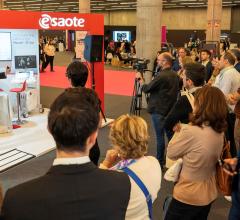
June 20, 2011 – The Emergency Medicine Foundation (EMF) has awarded $20,000 to Dimitrios Papanagnou, M.D., FACEP, director of medical simulation and medical student ultrasound course director at SUNY Downstate Medical Center in Brooklyn, N.Y., to fund point-of-care ultrasound research in emergency settings. The grant was sponsored by Siemens.
EMF developed the grant topic in collaboration with Vicki Noble, M.D., emergency physician at Boston’s Massachusetts General Hospital and ultrasound section chair for the American College of Emergency Physicians (ACEP). The grant is intended to help increase point-of-care ultrasound outcomes research and provide healthcare systems with evidence of the benefits of point-of-care ultrasound, including cost and time effectiveness.
“There’s been an enormous amount of interest in diagnostic imaging in the past five to 10 years,” said Noble. “Many single-center descriptive studies have shown that ultrasound is an effective and efficient method of diagnostic imaging, but the lack of multi-center outcome trials has made it difficult to prove the true benefits of point-of-care ultrasound in emergency medicine.”
While previous research has focused on the accuracy of ultrasound applications, this grant will sponsor a study that examines the effectiveness of emergency ultrasound through a variety of measures, including patient outcomes and throughput, departmental costs, safety and patient satisfaction.
“We hope that this kind of outcomes research can demonstrate how and why point-of-care ultrasound should be used,” said Noble. “If we can demonstrate that it improves patient care efficacy, perhaps ultrasound could become something that is learned in medical school rather than during residency.”
With the grant, Papanagnou will analyze clinician-performed bedside ultrasound in patients presenting to the emergency department (ED) with acute dyspnea. The study will investigate whether basic ultrasound views of the heart and lungs can improve the ability of ED physicians to identify the source of patient dyspnea.
For more information: www.siemens.com/healthcare


 August 27, 2024
August 27, 2024 








